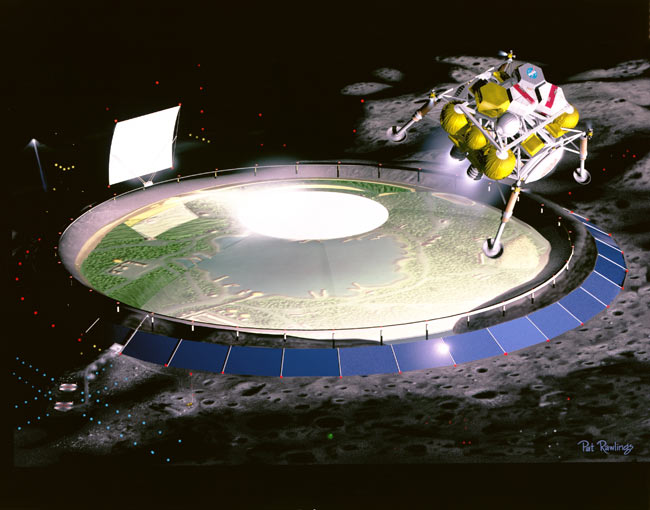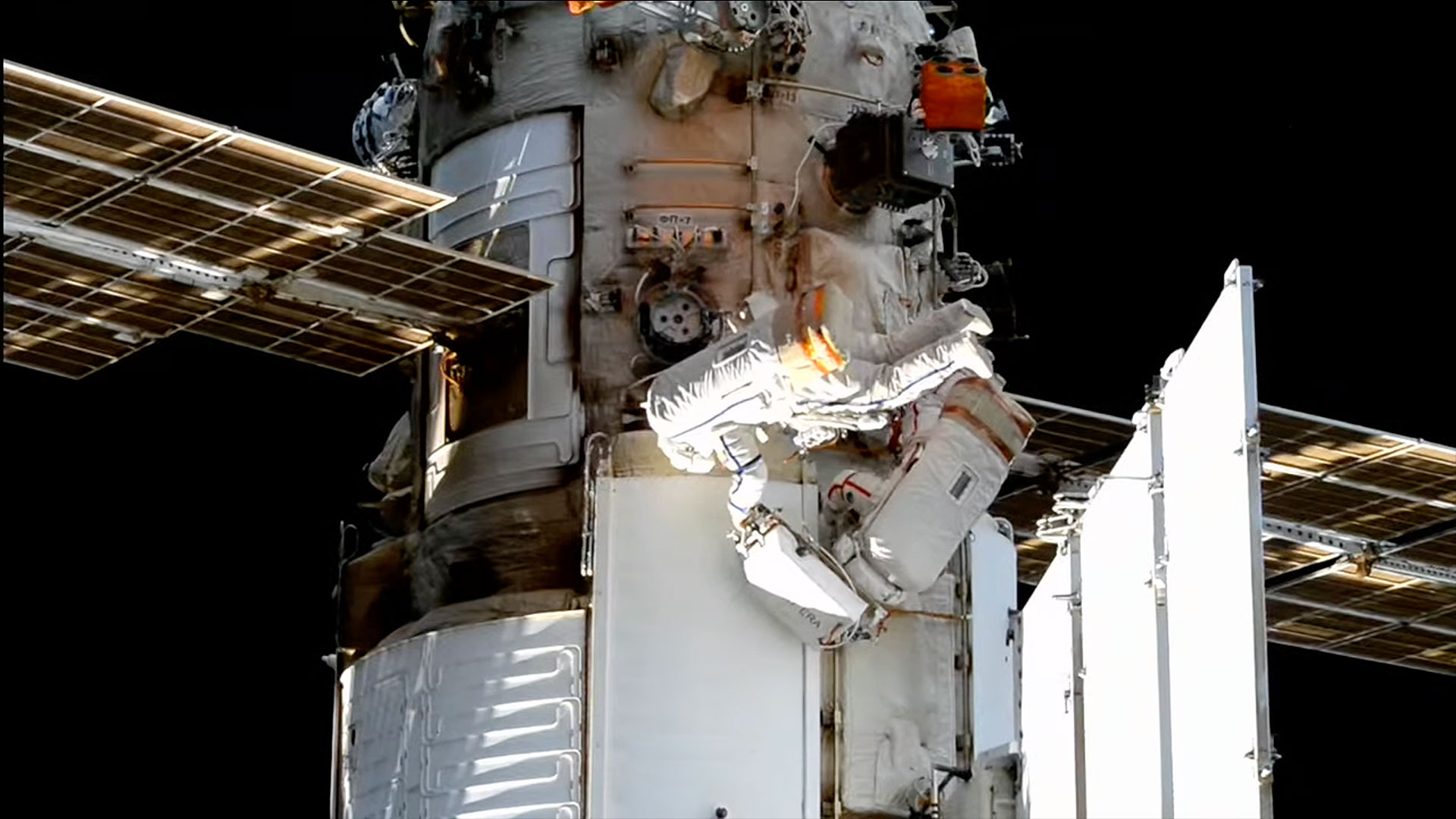Space Farms Could Mine Minerals From Moon Dirt

Future manned missions to the moon orMars could use plantsas bio-harvesters to extract valuable elements from the alien soils,researchers say.
Now they hope to launch newexperiments to follow up ontests done with plants and lunar regolith during NASA's Apollo programthatlanded men on the moon.
Lunar regolith is a loose mixture ofdust, soil, broken rockand other related materials that lie on top of solid bedrock. TheApollo-eraresearch showed that returned lunar samples of the regolith did nothave toxinsor contain alien life-form contaminants that could threaten plants,animals orhumans on Earth. [Plansto grow flowers on the moon.]
Yet limited use of the precious lunarregolith meant thatscientists could not study how well plants fared when grown in regolith.
"In spite of the fact that weabsolutely admire theinnovative science done in the Apollo era, the question of whether aplantcould grow if you plop a seed in lunar regolith hasn't been answered,"said Robert Ferl, a geneticist at the University of Florida inGainesville.
Ferl and Anna-Lisa Paul, anothergeneticist at the University of Florida, hope to pick up where theApollo-era experiments left off. Renewedresearch could take advantage of the powerful tools developed in thepastseveral decades for studying molecular biology and genetics, and seehow plantsreact on a molecular level by turning on or off their genes in responsetoregolith.
New studies could also push thepotential shown in howplants apparently derived some nutrients from lunar regolith. Thatcould gobeyond the dreams of lunar agriculture to transform plants into planetaryharvesters, and ultimately help sustain human bases on aliensoil.
Breaking space news, the latest updates on rocket launches, skywatching events and more!
"It's not just about using lunar andMars regolith togrow plants," Paul explained. "It's about capturing nutrients thatmight otherwise be lost to us."
The review study of Apollo-era plantexperiments wasdetailed in the April issue of the journal Astrobiology.
Safety first
NASA took great precautions withsamples returned during thefirst manned missions to the Moon by building the Lunar Receiving Lab(LRL) atthe Johnson Space Center in Houston. The LRL facility's design intendedtoensure that no dangerous contaminants or unknown alien life formsescaped tothreaten Earth's biosphere, even as researchers began carrying outbiologicalexperiments with the lunar regolith.
Any planetaryprotection fears faded quickly as the first studies showedthat plants didnot wither and die from contact with lunar samples.
About 35 plant speciesremained in good health after lunarsamples from the Apollo 11 and 12 missions had been rubbed onto theleaves andplaced at their base. Similarly, animals did not suffer from any illeffectsduring exposure to lunar samples.
In fact, one study found thatgerminated seedlings and plantcultures seemed to enjoy nutritional benefits from the lunar samples.The lunardust and regolith contained certain elements useful for plant growth,such asiron, magnesium and manganese, even if it mostly lacked necessaryelements suchas nitrogen, phosphorus, sulfur and potassium.
That pointed to the possibility ofusing plants to biologicallyharvest nutrients or minerals from the Moon, and suggested that lunarfarmscould contribute to life-support beyond just feeding astronauts.
"In one interesting model put out afew years ago,plants would live in low-pressure pods on the surface," Ferl said."Astronauts or lunar colonists would go out in pressure suits tocapturethem."
Taking the next step
The plants may have survived and eventhrived a smallsprinkling or rubbing of lunar material, but researchers say manyunknownsremain after the last lunar soil experiments that took place 30 yearsago.
For instance, none of the Apollo-eraexperiments examinedhow lunar material affected the microorganisms such as bacteria orfungi thatnormally assist plants in harvesting nutrients. Even microbes fromhumanastronauts might interact with the plant roots in the region of soilknown asthe rhizosphere.
"You have the colonization of theplant roots by a hostof organismsthat break down and transport materials," Paul said. "These thingsfacilitate the harvesting of molecules from the substrate in which theplant isgrowing."
New experiments don't need to waitfor a return trip to the Moon,according to the researchers. They already have plans that wouldrequire just afew grams of the hundreds of kilograms of lunar regolith collected byNASA.
Just one gram of lunar regolith couldsupport the growth ofseveral Arabidopsis plants related to cabbage andradish, Paul pointedout. That model organism represented the first plant to have its genomesequenced, and so would provide a great baseline for lunar biologyexperiments.
.From Earth to the Moon andMars
Such testing concepts could alsobecome part of experimentsdone on the Moon itself, whenever a human base does get established.Those experimentswould not only answer questions about basic plant biology, but alsoprovide theseeds of knowledge for developing ecologyoff ofEarth.
"One goal is to use plants forlife-support and findout the best means to do that, and [figure out if] plants use lunarresourcesto do that," Ferl said. "The other question is what the limits ofterrestrial life are, and does the Moon's surface represent a placethatterrestrial biology can inhabit."
That approach could also help tackleproblems related togrowing plants in Martian regolith. Some studies on Earth have alreadytestedplant growth in Mars-simulant regolith augmented with certainchemicals, evenif a Martian sample has yet to reach Earth.
In the end, the same need to use allavailable resources andhelp sustain human colonists would become even greater for a trip toMars.
"Going to Mars is so much moredifficult, because theconcept of taking all your resources with you for the whole tripbecomes moredifficult," Paul said. "The drivers that would point toward usingplants for life support actually become more crucial."
Planting the seeds
More Earth experiments also couldhelp engineers andscientists better design future orbital or extraterrestrial farms.
"Testing on extreme environments onEarth could be veryuseful to identify critical design aspects to be fixed prior to buildand fly ademonstration system on the [International Space Station]," saidClaudioFinetto, an engineering consultant for Thales Alenia Space-Italia inTorino, Italy.
Finetto and colleagues CesareLobascio and AlessandroRapisarda calculated that a bio-regenerative life support system withjust 20percent of food re-supplied from Earth would become more convenient foran18-person moon base inhabited for longer than five years, as opposed torelyingon complete food re-supply from Earth.
Their work is detailed in theMay-June issue of the journal ActaAstronautica. The Lunar FARM concept also grew out of apost-graduatecourse in SpacE Exploration and Development Systems (SEEDS) SecondEdition atPolitecnico di Torino, where Finetto worked with Salvatore Cusumano,DanieleRenzoni, Amir Sabbagh and Cosimo Sinesi.
Even if NASA has scrapped immediateplans to return to the Moon,Finetto agreed that a manned Mars mission could benefit from aself-sustainingapproach. He added that a spacecraft greenhouse could supportastronauts on theMartian surface just as easily as during the six-month journeys to andfrom thered planet.
More advanced robots could alsoreduce the amount of timehuman astronauts spend on cultivating their plants, according toFinetto.
That still looks a long way off fromthe Apollo-eraexperiments with bits of lunar regolith sprinkled atop plants. Butsomeday,robots could maintain a self-sustaining greenhouse orbiting above Marsas humanexplorers focus on science and exploration down on the surface below.
- Top10 Space Foods of All Time
- AstronautsMay Get Their Wheaties on Mars
- IdeaHatched to Grow First Flower on the Moon
Join our Space Forums to keep talking space on the latest missions, night sky and more! And if you have a news tip, correction or comment, let us know at: community@space.com.
Jeremy Hsu is science writer based in New York City whose work has appeared in Scientific American, Discovery Magazine, Backchannel, Wired.com and IEEE Spectrum, among others. He joined the Space.com and Live Science teams in 2010 as a Senior Writer and is currently the Editor-in-Chief of Indicate Media. Jeremy studied history and sociology of science at the University of Pennsylvania, and earned a master's degree in journalism from the NYU Science, Health and Environmental Reporting Program. You can find Jeremy's latest project on Twitter.
